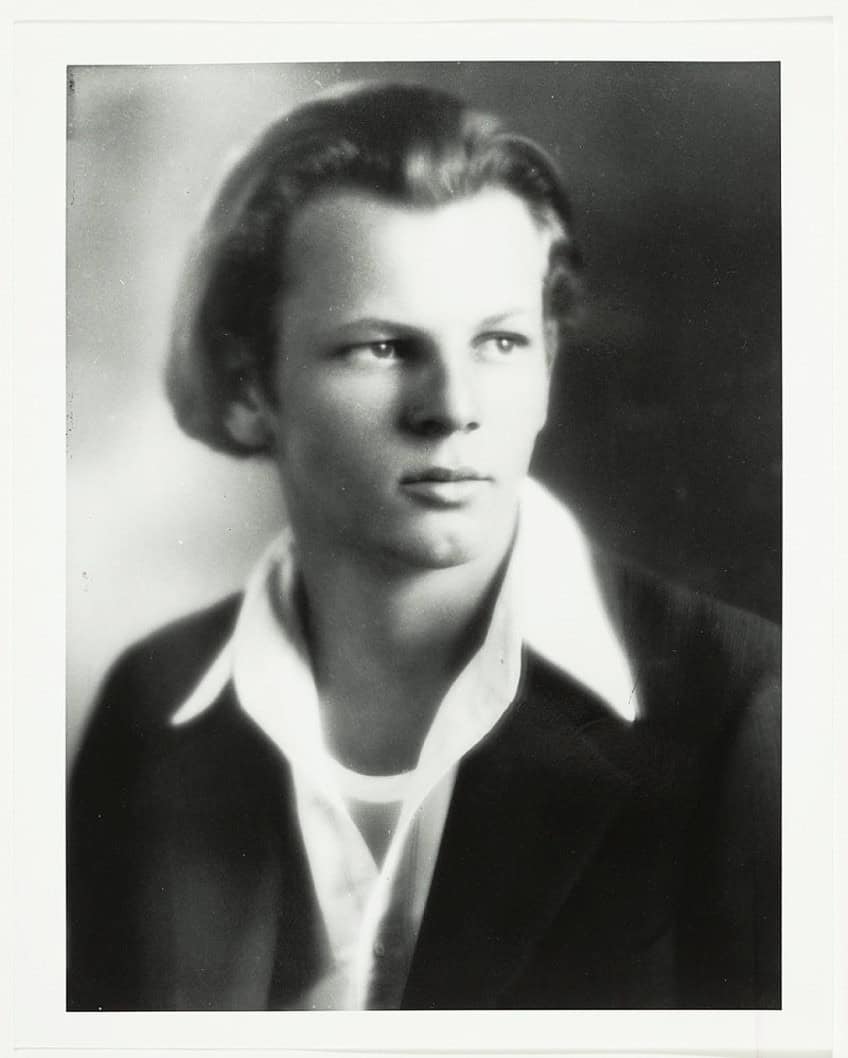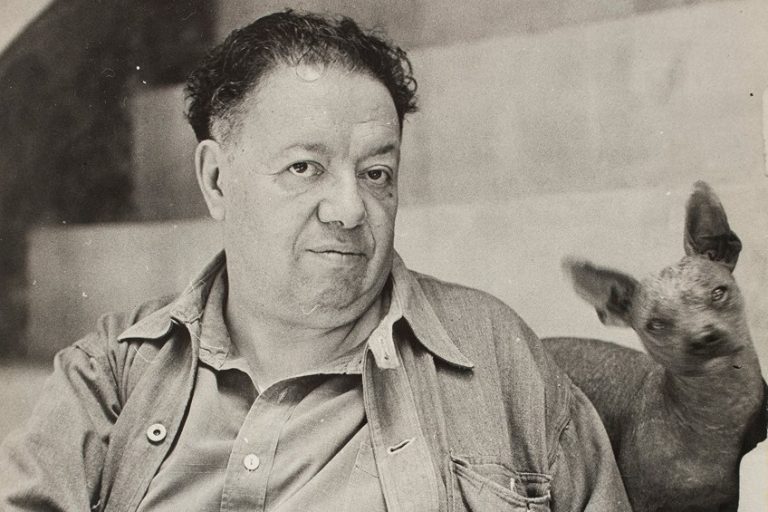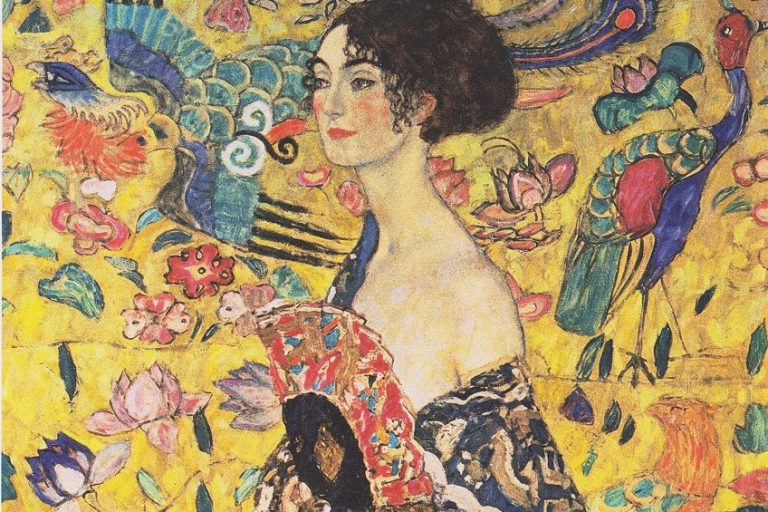“One: Number 31, 1950” by Jackson Pollock – The Art of Chaos
Jackson Pollock’s masterpiece, One: Number 31, 1950, stands as an iconic representation of Abstract Expressionism, a movement that redefined the landscape of modern art in the mid-20th century. Created during Pollock’s revolutionary drip painting period, this monumental work embodies his unique technique of pouring, splashing, and dripping paint onto canvas laid flat on the ground. Measuring over 8 feet tall and 17 feet wide, the sheer scale of One: Number 31, 1950 immerses viewers in a whirlwind of energetic brushstrokes and intricate layers of color. Its abstract composition invites interpretation, encouraging viewers to explore the expressive depths of Pollock’s artistic vision and the dynamic interplay between chaos and control that defines his enduring legacy in the art world.
Key Takeaways
- One: Number 31, 1950 exemplifies Jackson Pollock’s revolutionary drip technique.
- The painting is a significant piece within the Abstract Expressionist movement.
- Acquired by the Museum of Modern Art in 1968, it continues to influence modern art.
The Artist and Historical Context
| Artist | Jackson Pollock (1912 – 1956) |
|---|---|
| Date Created | 1950 |
| Medium | Oil and enamel paint on canvas |
| Genre | Abstract Expressionism |
| Period/Movement | Modern Art |
| Dimensions (cm) | 269.5 x 530.8 |
| Series/Versions | Single version |
| Where Is It Housed? | Museum of Modern Art, New York City, United States |
| What It Is Worth | Estimated value varies significantly; regarded as a seminal work of Abstract Expressionism |
Jackson Pollock’s One: Number 31, 1950 stands as a pivotal work in the history of modern art, illuminating the profound impact of Abstract Expressionism. Painted during the height of his career, this masterpiece showcases Pollock’s revolutionary drip technique, where enamel paint was poured, dribbled, and flicked onto a canvas laid flat on the floor.
Created in the summer and fall of 1950, this immense piece measures eighteen feet wide, making it one of Pollock’s largest and most ambitious works.
Pollock’s unique style, characterized by the intertwining threads of paint, challenges traditional notions of composition and form. The dynamic and complex layers of One: Number 31, 1950 invite viewers to explore the chaotic yet harmonious nature of the artwork, reflecting the artist’s intense emotional states and innovative approach. The painting was acquired by the Museum of Modern Art in 1968, where it continues to captivate audiences with its bold abstraction and raw energy.

The influence of One: Number 31, 1950 extends beyond its immediate visual impact, contributing significantly to the evolution of modern art. It exemplifies the spirit of Abstract Expressionism, a movement that emphasized spontaneity, emotion, and the unconscious. Pollock’s work not only redefined artistic boundaries but also inspired future generations of artists to push the limits of creativity and expression.
Abstract Expressionism in Art History
Abstract Expressionism emerged in the mid-20th century as a significant artistic movement in the United States, emphasizing spontaneous expression. This movement was influenced by European Surrealism but focused more on the act of painting itself.
Artists like Pollock were central figures. They used unconventional methods, aiming to convey emotions and concepts rather than represent reality.
The post-World War II era, marked by existential questioning and a desire for new forms of expression, provided fertile ground for this art form. The movement also represented a shift of the art world’s center from Paris to New York.
Pollock’s Artistic Breakthrough and Technique
Pollock’s innovative “drip” technique defined his most famous works. In his Barn Studio, he would lay unprimed canvas on the floor, allowing him to pour, drip, and flick enamel paint from various heights. This method created dynamic, intricate layers of paint.
One: Number 31, 1950 exemplifies his mastery, with its dense interlacing of paint threads. This approach broke from traditional easel painting, emphasizing movement and physical engagement with the canvas. Pollock’s work signified a breakthrough in modern art, reflecting his deep emotional intensity and the broader themes of Abstract Expressionism.
Analyzing One: Number 31, 1950
One: Number 31, 1950 by Jackson Pollock is notable for its grand scale, dynamic composition, and innovative use of color and materials. The painting’s enigmatic title also adds an intriguing layer for art enthusiasts to ponder.
Composition and Scale
One: Number 31, 1950 is an immense canvas, measuring approximately eighteen feet in width. This wall-sized piece demands the viewer’s attention, making a powerful visual impact. Pollock’s renowned drip technique is exemplified in this work, where he poured, dribbled, and flicked enamel paint over the canvas.
The dense interlacing of paint threads creates an energetic, chaotic surface.
The composition lacks a central focal point, encouraging viewers to absorb the work as a whole. Instead of traditional brushwork and easels, Pollock laid the canvas flat on the ground, approaching it from all angles. This allowed him to engage with the canvas in a physical manner, a hallmark of his style.
Color and Material
Pollock used a combination of oil and enamel paint to achieve varied textures and hues. The color palette in One: Number 31, 1950 includes blacks, whites, and earth tones, punctuated with occasional splashes of bright color. These choices enhance the complexity and depth of the work.
The enamel paint’s liquidity was essential for Pollock’s technique, allowing the paint to flow and interact directly on the canvas. This resulted in a rich array of patterns and layers that are both chaotic and harmonious. The use of industrial materials like enamel paint was groundbreaking at the time, reflecting Pollock’s innovative approach to art.
The Enigmatic Title
The title, One: Number 31, 1950, reflects Pollock’s departure from traditional naming conventions. The use of numbers rather than descriptive titles directs the focus away from thematic interpretation and toward the visual experience itself.
This abstraction reinforces the idea that the painting should be appreciated for its formal qualities rather than any implied narrative.
The numeral designation also suggests a systematic approach, hinting at the artist’s process and the sequence of his works. Naming it “One” could signify primacy or importance, suggesting that this piece holds a significant place in Pollock’s oeuvre. The title thus contributes to the mysterious and avant-garde nature of the painting.
Influence and Legacy
Jackson Pollock’s One: Number 31, 1950 significantly impacted modern and contemporary art, contributed to scientific studies like fractal analysis, and continues to be revered as a masterpiece in the art world today.
Impact on Modern and Contemporary Art
One: Number 31, 1950 exemplifies the Abstract Expressionist movement, which revolutionized American art. It influenced numerous artists, who were inspired by Pollock’s innovative technique of dripping and pouring paint. This painting’s scale and energy encapsulated the era’s bold artistic exploration. Other artists incorporated elements of spontaneity and physicality into their work, drawn by Pollock’s revolutionary style.
The painting’s influence persists in contemporary art, where its elements can be seen in various modern artworks.
Fractal Analysis and Nature
Pollock’s drip paintings have been a subject of fractal analysis, which reveals patterns that mirror those found in nature. Researchers have applied fractal mathematics to understand the complexity of Pollock’s works. Fractal qualities suggest an inherent order in his seeming randomness. This connection between art and nature has expanded appreciation of Pollock’s technique, highlighting the scientific understanding of complex natural patterns. Such analyses underscore Pollock’s artistry and how his unique methods bridge art and science.
Legacy of One: Number 31, 1950 Today
Today, One: Number 31, 1950 remains a cornerstone of Abstract Expressionism. It is housed in the Museum of Modern Art, symbolizing a critical period in American art history. The Pollock-Krasner Foundation and Artists Rights Society continue to protect and promote Pollock’s legacy.

This painting’s ongoing display and analysis fortify its status as an indispensable part of Pollock’s oeuvre. Its presence in academic discussions and exhibitions ensures that its influence endures, cementing Pollock’s place as a pivotal artist of the 20th century.
One: Number 31, 1950 by Jackson Pollock remains an unparalleled testament to the power and innovation of Abstract Expressionism. Its chaotic yet deliberate composition challenges conventional notions of artistic technique and meaning, inviting viewers to confront the raw intensity and emotional depth captured within its sprawling canvas. As a pinnacle of Pollock’s career, this work continues to inspire discourse and fascination, emphasizing not only the artist’s technical prowess but also the profound impact of his experimental approach on the trajectory of modern art. One: Number 31, 1950 stands as a timeless reminder of Pollock’s enduring influence and his ability to transcend traditional boundaries, leaving an indelible mark on the evolution of artistic expression.
Frequently Asked Questions
What Is the Significance of Jackson Pollock’s One: Number 31, 1950 in Art History?
One: Number 31, 1950 marks a pivotal moment in Jackson Pollock’s career. Produced in 1950, this painting is considered one of his masterpieces. The work showcases Pollock’s ability to manipulate paint in innovative ways, cementing his reputation as a leading figure in Abstract Expressionism.
How Did One: Number 31, 1950 Contribute to the Abstract Expressionism Movement?
This painting played a crucial role in the Abstract Expressionism movement by exemplifying the emotional intensity and creative freedom associated with the style. Pollock’s use of large canvases and dynamic techniques challenged traditional notions of painting, inspiring a new generation of artists to explore expression through abstraction.
How Does One: Number 31, 1950 Exemplify Pollock’s Drip Painting Style?
One: Number 31, 1950 is a prime example of Pollock’s drip painting technique, where he poured, dribbled, and flicked enamel paint onto the canvas laid on the floor. This method allowed him to achieve a dense network of interlaced colors and textures, creating a sense of movement and depth unique to his style.
What Is the Value of One: Number 31, 1950 in the Current Art Market?
While One: Number 31, 1950 is not available for sale due to its residence at the Museum of Modern Art in New York, its value in the art market is immense. Considered a priceless piece of modern art history, its worth is estimated to be in the hundreds of millions of dollars, reflecting its significance and influence.
Isabella studied at the University of Cape Town in South Africa and graduated with a Bachelor of Arts majoring in English Literature & Language and Psychology. Throughout her undergraduate years, she took Art History as an additional subject and absolutely loved it. Building on from her art history knowledge that began in high school, art has always been a particular area of fascination for her. From learning about artworks previously unknown to her, or sharpening her existing understanding of specific works, the ability to continue learning within this interesting sphere excites her greatly.
Her focal points of interest in art history encompass profiling specific artists and art movements, as it is these areas where she is able to really dig deep into the rich narrative of the art world. Additionally, she particularly enjoys exploring the different artistic styles of the 20th century, as well as the important impact that female artists have had on the development of art history.
Learn more about Isabella Meyer and the Art in Context Team.
Cite this Article
Isabella, Meyer, ““One: Number 31, 1950” by Jackson Pollock – The Art of Chaos.” Art in Context. July 8, 2024. URL: https://artincontext.org/one-number-31-1950-by-jackson-pollock/
Meyer, I. (2024, 8 July). “One: Number 31, 1950” by Jackson Pollock – The Art of Chaos. Art in Context. https://artincontext.org/one-number-31-1950-by-jackson-pollock/
Meyer, Isabella. ““One: Number 31, 1950” by Jackson Pollock – The Art of Chaos.” Art in Context, July 8, 2024. https://artincontext.org/one-number-31-1950-by-jackson-pollock/.











